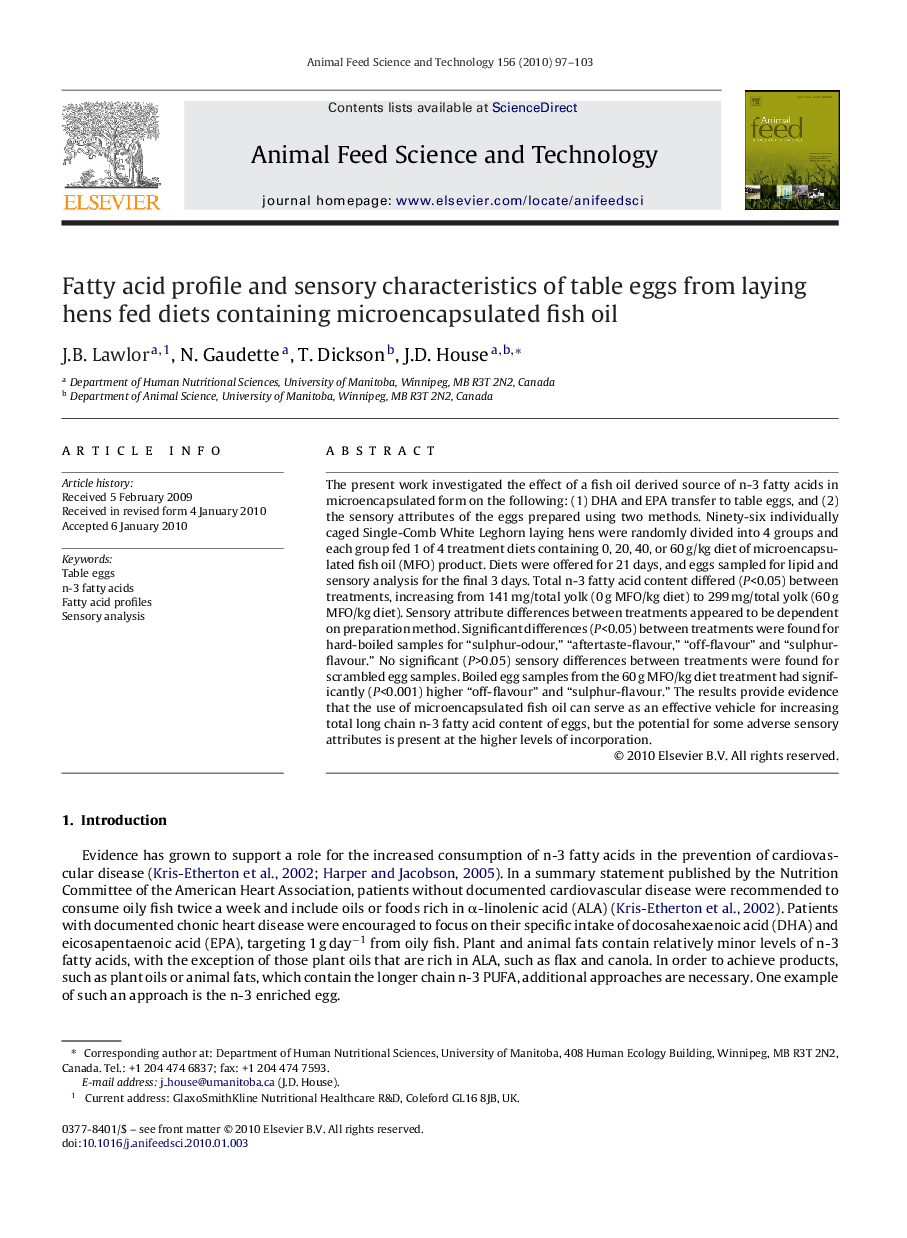| Article ID | Journal | Published Year | Pages | File Type |
|---|---|---|---|---|
| 2420137 | Animal Feed Science and Technology | 2010 | 7 Pages |
The present work investigated the effect of a fish oil derived source of n-3 fatty acids in microencapsulated form on the following: (1) DHA and EPA transfer to table eggs, and (2) the sensory attributes of the eggs prepared using two methods. Ninety-six individually caged Single-Comb White Leghorn laying hens were randomly divided into 4 groups and each group fed 1 of 4 treatment diets containing 0, 20, 40, or 60 g/kg diet of microencapsulated fish oil (MFO) product. Diets were offered for 21 days, and eggs sampled for lipid and sensory analysis for the final 3 days. Total n-3 fatty acid content differed (P<0.05) between treatments, increasing from 141 mg/total yolk (0 g MFO/kg diet) to 299 mg/total yolk (60 g MFO/kg diet). Sensory attribute differences between treatments appeared to be dependent on preparation method. Significant differences (P<0.05) between treatments were found for hard-boiled samples for “sulphur-odour,” “aftertaste-flavour,” “off-flavour” and “sulphur-flavour.” No significant (P>0.05) sensory differences between treatments were found for scrambled egg samples. Boiled egg samples from the 60 g MFO/kg diet treatment had significantly (P<0.001) higher “off-flavour” and “sulphur-flavour.” The results provide evidence that the use of microencapsulated fish oil can serve as an effective vehicle for increasing total long chain n-3 fatty acid content of eggs, but the potential for some adverse sensory attributes is present at the higher levels of incorporation.
